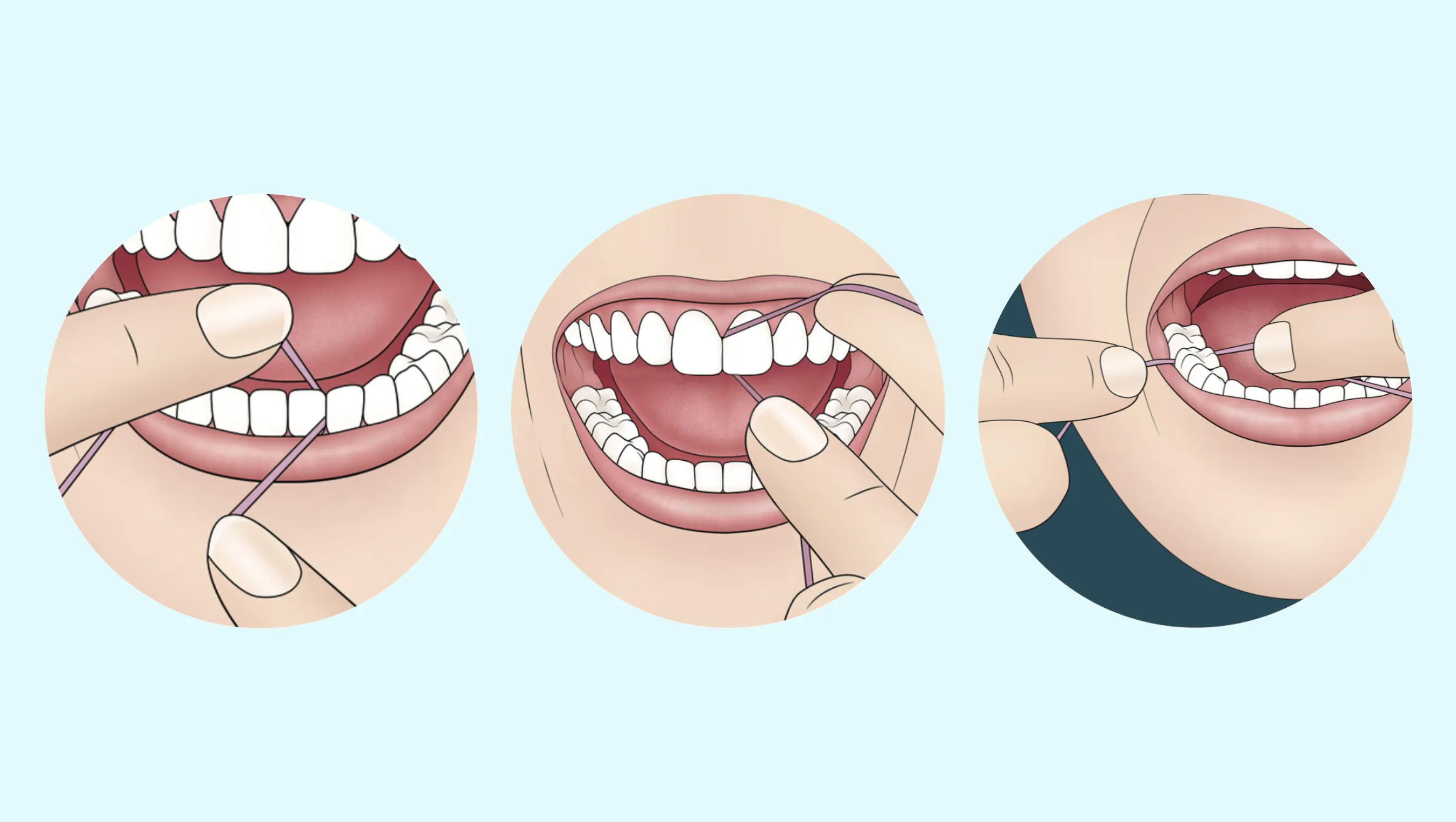To floss properly, gently move the floss up and down against both sides of each tooth. When the floss approaches the gum line, bend it around the base of the tooth into a C-shape.
Flossing is a key part of oral care. It removes food particles lodged between teeth and decreases the amount of bacteria and plaque in your mouth. Plaque is a sticky layer that accumulates on teeth and contributes to cavities and periodontal disease.
Although many people brush daily, not everyone flosses as consistently. According to a national survey, roughly 4 in 10 Americans floss at least once a day, while about 20% never floss.
Simply flossing isn’t enough — you must floss the right way. Incorrect flossing may harm your teeth and gums. If you’re unsure how to clean between your teeth safely and effectively, here’s a clear, stepwise method for proper flossing.
Flossing: Steps to follow
Use this step-by-step walkthrough to ensure you floss your teeth correctly.

How to floss when you have braces
Flossing with braces requires extra care and more time than flossing without orthodontic appliances. If using traditional floss, plan to spend about 10 to 15 minutes to thoroughly floss your teeth.
Select waxed floss for this approach, as it’s less prone to tearing or getting lodged in the braces.
Alternatives to waxed floss that work well with braces include a Waterpik (a water-based flosser) or a floss threader, a small aid that helps you guide floss beneath the wires. Both options can reduce the time needed to floss.
When is the best time to floss?
Timing your flossing contributes to better oral health. Many people brush first and then floss, but dentists generally advise flossing before brushing.
Flossing loosens and frees food debris and plaque between teeth, while brushing removes those loosened particles. If you brush before flossing, trapped debris can remain in your mouth until your next brushing session.
The American Dental Association suggests flossing at least once daily and brushing twice daily.
Different kinds of dental floss
Dental floss is available in many forms. The right type depends on your personal preference, the spacing between your teeth, and whether you wear braces or have bridges.
Some floss types perform better in wider gaps, while others are suited for tight spaces.
Common forms of dental floss include:
- Dental tape. This variety is wider and flatter like a ribbon, making it simpler to use if you have braces, gaps, or large spaces between teeth.
- Standard floss. A thin nylon strand that fits between teeth. It comes in flavored or unflavored options and in waxed or unwaxed varieties. For crowded or closely spaced teeth, waxed floss can slide between teeth more easily.
- Super floss. Designed for braces, bridges, and gaps, this product includes a firm end for threading under appliances, a spongy section for cleaning around hardware, and regular floss to remove plaque beneath the gumline.
Other aids to simplify flossing
Besides dental tape, waxed floss, and floss threaders, several tools can make flossing faster and simpler.
- Electric or water flossers use streams of water and pressure to flush out plaque and food between teeth. These devices are excellent for people who struggle with regular floss and are particularly useful with braces, where they can clean around brackets and wires.
- Disposable floss picks are another option. They’re convenient to maneuver and help access the back teeth more easily.
Takeaway
Good oral hygiene is more than brushing alone; proper flossing is essential.
Flossing removes bacteria, plaque, and trapped food between teeth, lowering the risk of decay and gum disease. In addition to daily brushing and flossing, schedule professional dental cleanings at least twice a year.


















Leave a Reply
You must be logged in to post a comment.